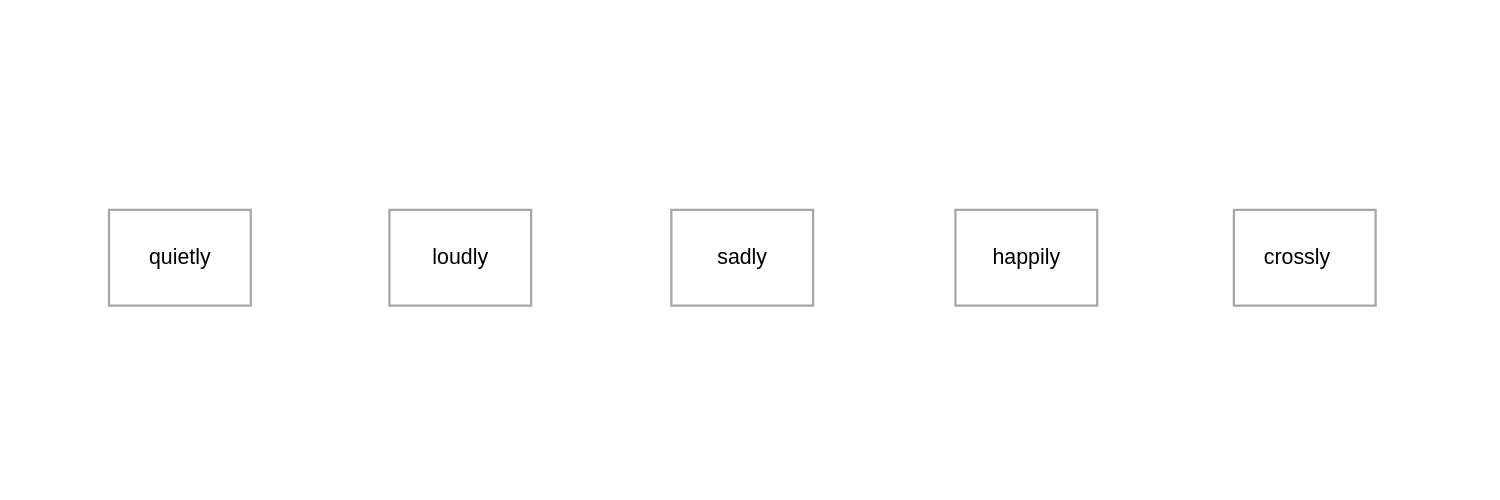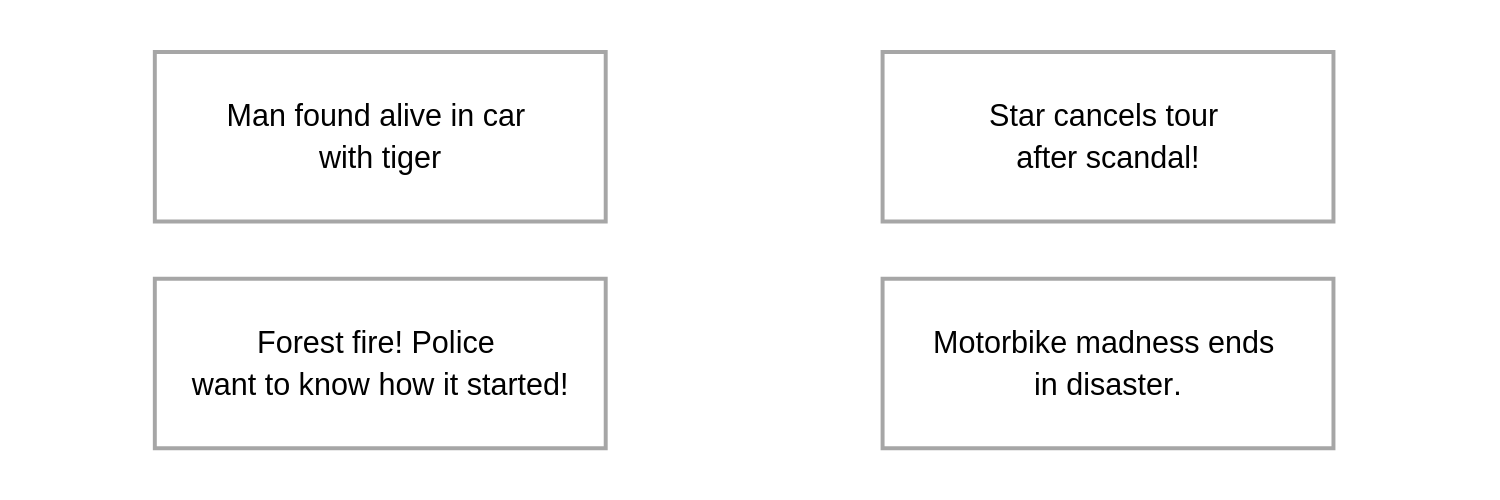 Diana Corcos, a teacher and teacher trainer, gives us a few tips on how to get students speaking in class.
Diana Corcos, a teacher and teacher trainer, gives us a few tips on how to get students speaking in class.
Recently, I was in the staff room looking at the timetables for the next term. I was worried because I’d been given one of the larger classes…about 30 students. I am not keen on big classes so I decided to spend some time thinking about how I could get them all involved in some speaking activities.
I know from experience that it’s really important for pronunciation and memory, as well as providing a change of activity to keep students interested; but it’s a challenge!
So I thought I’d share with you some of the ideas I’ve used successfully in the past.
? Get your classroom layout right
Have students’ desks and chairs arranged so they can see each other and you can move around easily. The students need to know that you’re listening and commenting on their progress as well as keeping an eye on them!
? Keep control – without raising your voice
We all worry about losing control of speaking activities in large classes but they can work if you don’t have to shout. Try this way to get your students to listen
Tell your class that when your hand is held up you expect everyone to be quiet and listen. At first, only a few students will see your hand go up, but they’ll tell others and in a few seconds everyone will be quiet and you can speak. It’s really just the same as them putting up their hand to speak to you, so they’ll soon get used to it.
? Grab their attention right from the start
Behaviour problems, especially with large groups, can happen when students drift into the lesson and it takes a while before everyone’s ready to start. So have something they can get on with immediately. Always have a task ready on the board when they come in – but keep it short. I use a kitchen timer which rings after a set time. My students always work in pairs.
Activities might be as simple as open-ended questions e.g.
- Why do people live in cities?
- Is school uniform a good or a bad thing?
- Does money bring happiness?
I choose a few students to report back to the class. If the topic links to the lesson then even better!
Discussion of a grammar point works well too.
What is the difference in meaning between…?
- He is going to the shops today
- He goes to the shops in the afternoons.
? Learn the names of all your students
In the first few lessons spend time getting everyone to learn everyone’s name. Guessing games in small groups work well.
- You are Maria. Your name is Keiko etc
- Give your students name cards to hand out and see if they can give them to the right people
- Have everyone draw a class map with names on it
And don’t forget to join in yourself.
? Drilling – don’t make it boring – make it fun!
Get your students to repeat a phrase in different ways or using different voices. Model the sentence yourself and then get your students to repeat it.
When they’ve had a go, hold up cards with instructions on; eg:

Get them to repeat the phrase in the way indicated on the card. They’ll certainly end up in fits of laughter, but they’ll be getting lots of good practice at the same time!
Choose instructions that your students will find funny, but always finish by coming back to a standard voice!
? Interested students are talkative students
We all like to talk about things that interest us, so link your speaking task to topics your students are interested in.
Try putting newspaper headlines on the board. Get the students to choose one that interests them and discuss in pairs what the story might be about.

When they’re ready, get a few students to tell their story to the class.
? Add a competitive element to make the lesson fun!
It’s impossible to make every part of a lesson fun, but the more often your students enjoy their lesson the easier your task will be. They’ll come back next time motivated and enthusiastic – and that has to be good for everyone.
So, here’s an idea you can use lots of times with different topics.
Give each pair of students a piece of paper with an alphabet written from the top to the bottom. Then write one topic on the board e.g. transport, fruit and vegetables, countries etc. You can choose the first few, and then let them make suggestions.
Ask your students to think of an object from the topic for every letter of the alphabet. Encourage them to talk to each other in English, and decide what to include. (This is usually a quiet activity as they don’t want other pairs to hear!)
e.g.
A – apple
B – banana
C – carrot
Put the timer on again and the pair with the largest number, when time is up, can read out their list, and they’re the winners.
And don’t forget to get everyone to take their papers home to complete for homework!
I think I’m looking forward to meeting my class now!
It’ll be fun to try out some of these ideas, and I hope they give you some ideas on practising speaking activities with your students too. And if you have some of your own, please share them.


And one of the most important additions here for me is using the “hands down” technique – that is, not choosing students who have their hands up. When I get feedback from the class I choose a student at random so the whole class realise that it could be their turn next. The result? Well they all have to pay attention and they all have to have prepared something in case they’re called upon to speak!
Yes, that’s a good one. It also means that the noisy ones do not gain extra teacher attention. In fact, I use the technique with teenagers that I will NOT call on the ones who are waving their hands around and trying to get my attention! Diana
Hi Diana
I work for OUP (ELT Sales) and would like to contact you regards an inquiry we’ve received from an outside company interested in contacting you. Can you email me at the address below?
Many thanks, Pam
I think these ideas are great; simple and practical. Thanks! One thing I’m just exploring with lower levels who need more structured speaking activities is the following idea:
get a short funny story and read it to the class. In pairs students read it to become familiar and concept check any new vocab and make sure they get the point. Put the story out of sight, then reveal a list of prompts that are intended to help them re-tell the story to each other.
Here’s an example: https://www.tesolzone.com/esl-short-stories.html
I love this because you can customise the story and the prompts to the level and needs of your students….and repeat with other stories.
Nice one. Sort of the ‘dictogloss idea’ Read a story several times and then see who can re-write/re-tell it with all the information included. Not an exact copy but with all the relevant details! Surprisingly difficult and a realy good listneing challenge! Diana Corcos
This is a great resource for teachers of all levels – thank you! I run a blog along a similar theme, with teachers doing guest blogs and sharing their experiences along with tips and behaviour management ideas.
One in particular I feel is similar to this blog, and is titled Great Teaching Resources. It is by a primary teacher called Rebecca, and is full of ideas for the classroom.
Here is the blog: https://www.protocol-education.com/blog.php?blog=great-teaching-resources-classroom-school-jobs-Rebecca
I hope others find it useful! The full blog is here, and is updated daily: https://www.protocol-education.com/blog.php
Will definitely look that one up. Sound very practical. Thanks, Diana Corcos
[…] Activities to get students speaking Diana Corcos, a teacher and teacher trainer, gives us a few tips on how to get students speaking in class. Recently, I was in the staff room looking at the timetables for the next term. Source: oupeltglobalblog.com […]
I think these ideas are great; simple and practical. Thanks! One thing I’m just exploring with lower levels who need more structured speaking activities is the following idea:
get a short funny story and read it to the class. In pairs students read it to become familiar and concept check any new vocab and make sure they get the point. Put the story out of sight, then reveal a list of prompts that are intended to help them re-tell the story to each other.
Nice one. You can also have a series of pictures of the main points in the story which you put up as the story goes along …or even better draw some sketches on the board as the story is progressing. That way you can involve the students in what should go up to remind them and the dreadful nature of your artwork makes it even more memorable!. For example…’ It was a dark and starry night.’…and elicit what picture you should draw on the board for that. You end up with a series of pictures they have had an input into and then follow up activities can be spoken or written. Diana Corcos
[…] Activities to get students speaking […]
Thanks very much for your good ideas about speaking activities in large class. To find someone who is another activity to let students speak. They have to ask their friends around to find the answer and they can extend their language as well. One more idea I would like to suggest is the information gap activity. I think everyone know this kind of activity. The teacher just give them two worksheets. Worksheet A for student A. Worksheet B for student B. They take turn ask the questions they don’t know the answer while the other person knows the answer and they can give the answer to each other. Try it in the class and tell me what’s the result at [email protected]
how to deal in multinational class a difficult task please give some tips
In my country there are classes with over 130 students, it’s very difficult to find activities in which all the students are involved or even talk! But thank you so much for the tips.
yaseer
thanq for suggesting such ideas for teachers
really got countless ideas…m sure these all ideas i got will work nicely…
wow! ideas really it works ,we can follow the coin activity also,arrange some different years coins and ask them to remember any best moment of that year and share in the class and other students can raise volley of questions,like this the whole class got engaged.
Play a short story first. Let the students watch the story. Then play the same video as “Mute” volume button. Now that the visual presentation of the same story stimulates the students to get along with the flow of the story and at the same time they will try to recall the story too.
Learning Outcome: How to frame simple sentences, how to link one sentence to another sentence. How to present a story.
Thank.
I think these are brilliant ideas.